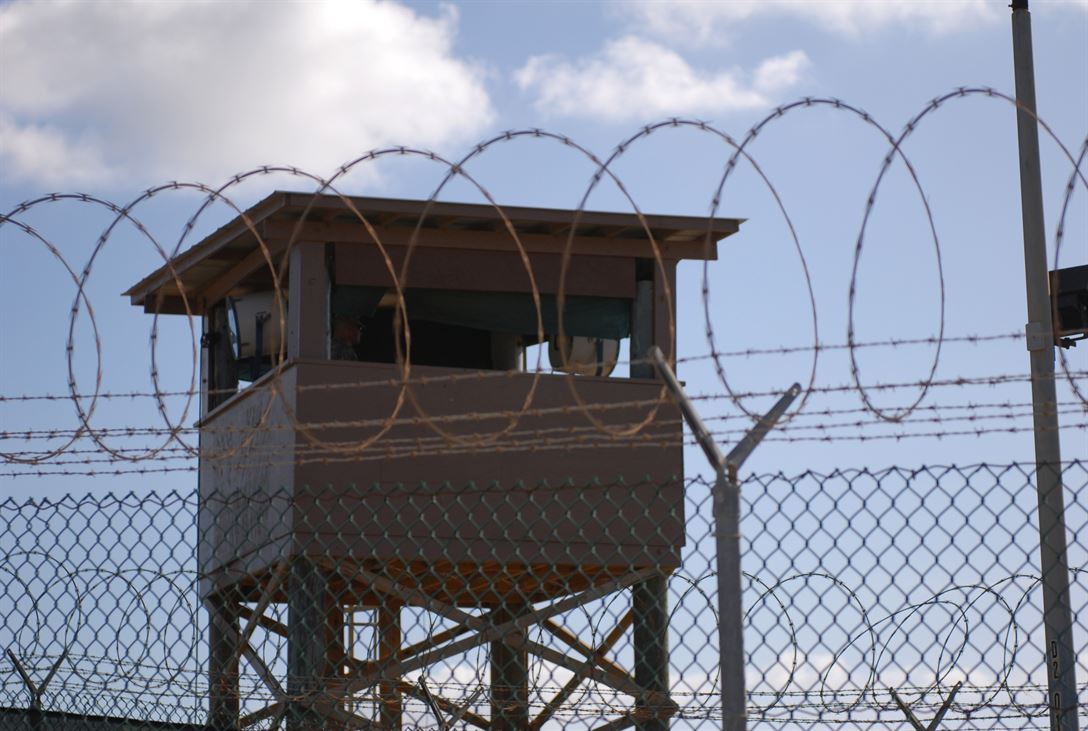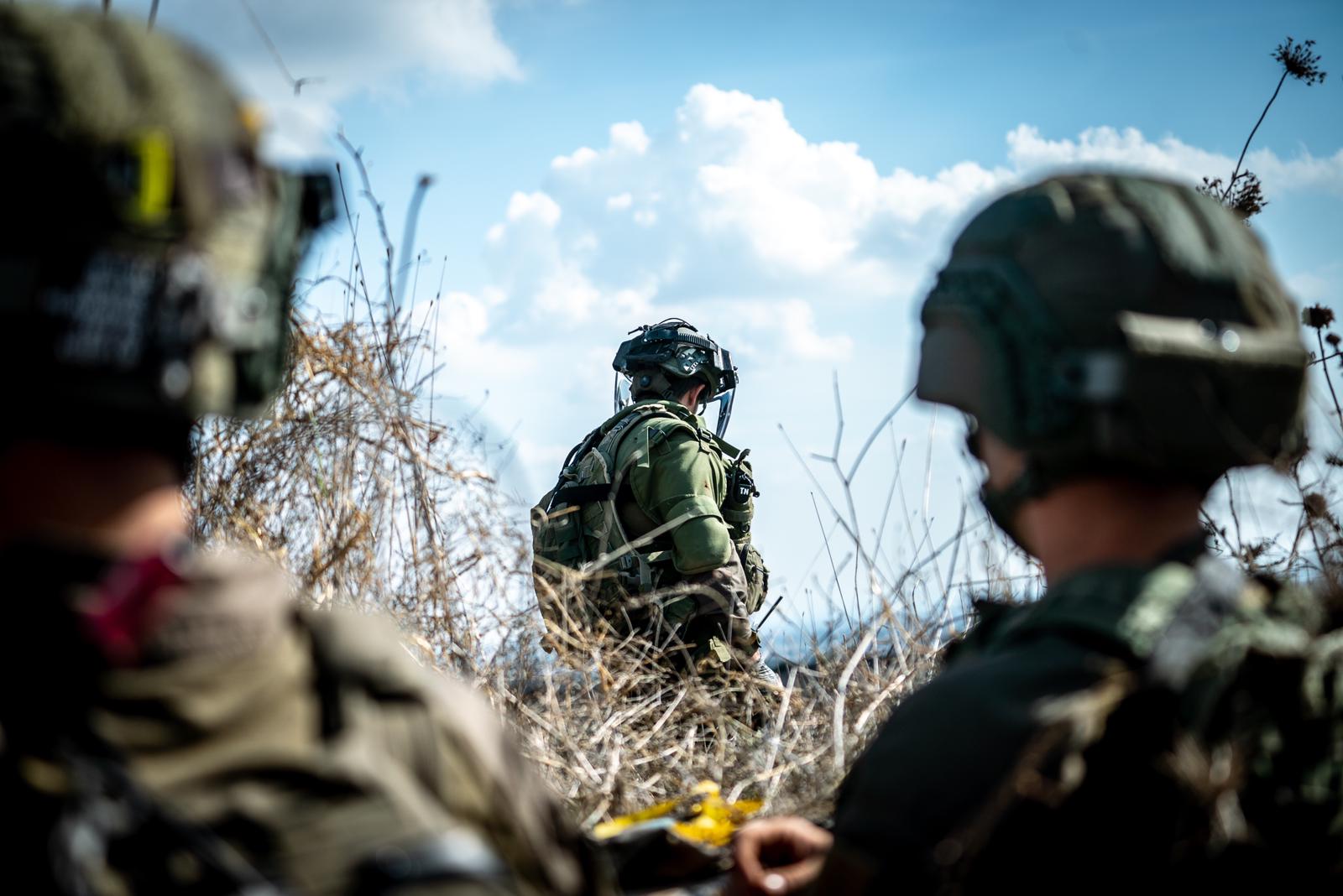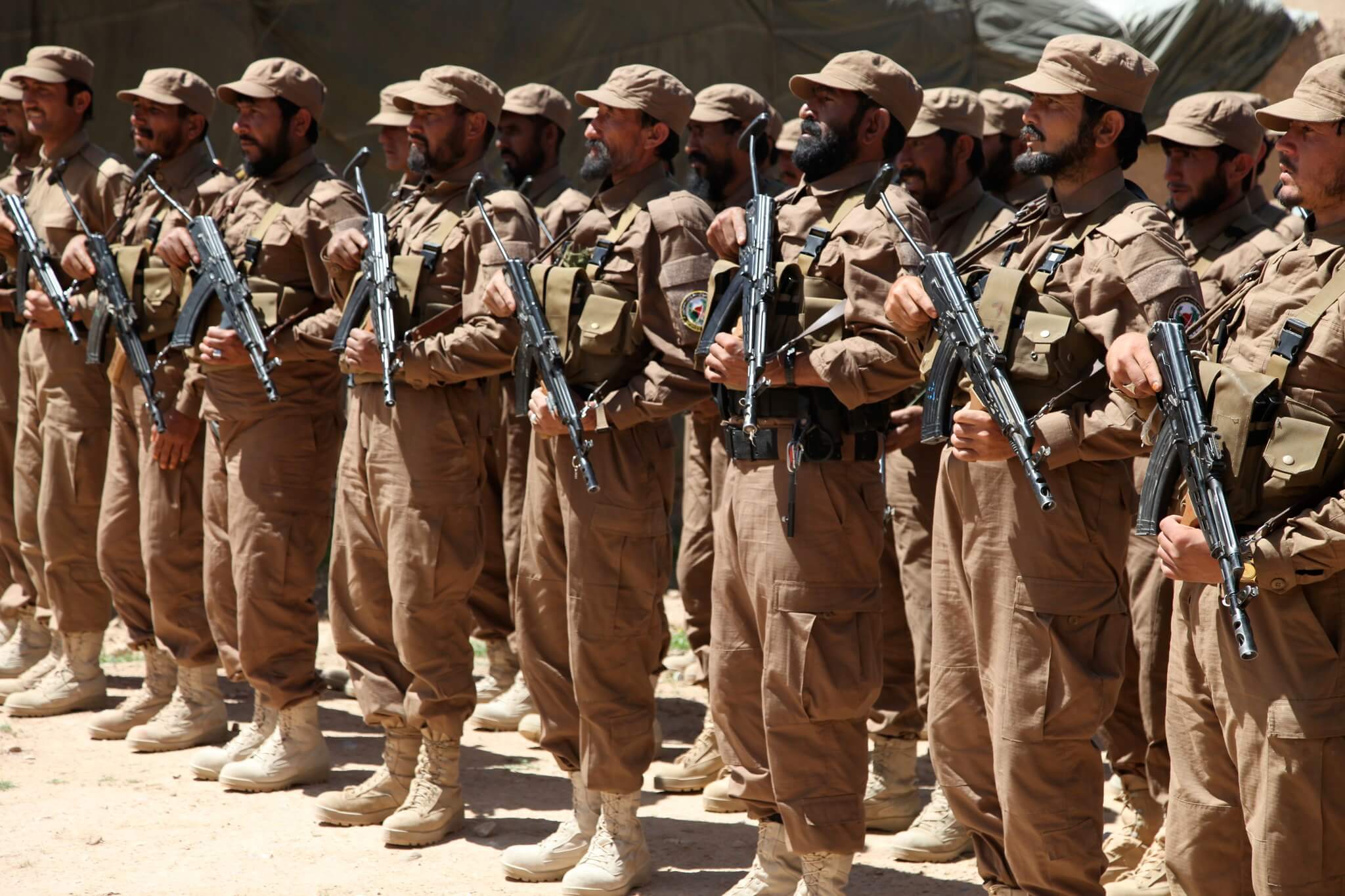What Politics and the Media Still Get Wrong About Abu Zubaydah
Note: The author is a member of Abu Zubaydah’s legal team. Joseph Margulies, Mark Denbeaux and Helen Duffy, who also represent Abu Zubaydah, have contributed to this article.

Published by The Lawfare Institute
in Cooperation With

Note: The author is a member of Abu Zubaydah’s legal team. Joseph Margulies, Mark Denbeaux and Helen Duffy, who also represent Abu Zubaydah, have contributed to this article.
Nowadays, perhaps more than ever, the public seems to want to forget Abu Zubaydah and repress any recollection of what the United States government has done to him (and the trauma he continues to suffer as a result). After all those years in which he was savagely tortured and imprisoned in isolation—and, further, held incommunicado—perhaps that should come as no surprise. Many people strive to keep guilty thoughts far from consciousness. Until, that is, events crop up that thrust the guilty thoughts back into the foreground. That’s what happened this spring when President Trump nominated CIA veteran Gina Haspel to be the agency’s director. In 2005, Haspel had drafted a cable at her superior’s direction that ordered the destruction of 90 videotapes of Abu Zubaydah’s interrogation and torture at a CIA “black site” in Thailand. And in May, the same month that Haspel was confirmed as CIA director, Abu Zubaydah won lawsuits in the European Court of Human Rights against Lithuania for its complicity in the CIA’s interrogation and torture of him in its territory. Lawfare and Just Security each published pieces on these events, but both outlets’ articles initially included factual errors. While those have since been corrected, in this piece, I will elaborate on some of the major falsehoods that have consigned my client, Abu Zubaydah, to solitary confinement at a military prison at Guantanamo Bay, possibly for the rest of his life.
The man the world knows as Abu Zubaydah is a Palestinian born and raised in Saudi Arabia; his given name is Zayn al-Abidin Muhammad Husayn. He has been held captive without charge or trial by the U.S. government for more than 16 years, with no end in sight. Perhaps not since the French political scandal known as the Dreyfus Affair, at the turn of the 20th century, has there been such a concerted campaign to promulgate false information about a prisoner. In our client’s case, the motive was to gain permission to torture Abu Zubaydah and to provide a basis for holding him incommunicado and in isolation.
Abu Zubaydah was captured on March 28, 2002, in Faisalabad, Pakistan, and soon became the subject of a political speech by President George W. Bush, who boasted: “The other day, we hauled in a guy named Abu Zubaydah. He’s one of the top operatives plotting and planning death and destruction on the United States. He’s not plotting and planning anymore. He’s where he belongs.” But except for the news of Abu Zubaydah’s capture, these other allegations were false.
Nevertheless, this message was repeated, with suggestions from administration officials—including Vice President Dick Cheney and Condoleezza Rice, then the national security adviser—that our client was “chief of operations” for al-Qaeda and a third-in-command to Osama bin Laden and Ayman al-Zawahiri. When advised that al-Qaeda experts at the CIA held a contrary opinion about Abu Zubaydah, according to Ron Suskind’s 2006 book “The One Percent Doctrine,” Bush’s “private disappointment fell” on then-CIA Director George Tenet.
“I said he was important,” Bush told Tenet at one of their daily briefings.
“You’re not going to let me lose face on this, are you?”
“No sir, Mr. President,” Tenet dutifully replied.
Soon, Abu Zubaydah was cast as the United States’ first “high-value detainee” and became the solitary subject of an Aug. 1, 2002, memo from the Justice Department’s Office of Legal Counsel (OLC) to the CIA’s acting general counsel, John Rizzo. The document was titled “Interrogation of al Qaeda Operative.” But as the Senate intelligence committee’s groundbreaking torture report noted in 2014, the CIA conceded in 2006 that Abu Zubaydah “was not a member of Al Qaeda” (Page 410). Further, effective Jan. 24, 2018, Abu Zubaydah was delisted by the United Nations Security Council from its Islamic State and al-Qaeda Sanctions List, based on the recommendation of the U.N. ombudsperson, who also concluded that Abu Zubaydah was not a member of al-Qaeda (Case 78).
The OLC memo approved 10 torture techniques, including waterboarding, to be inflicted on Abu Zubaydah. It predicated its legal reasoning on “facts” provided by the CIA (despite the agency’s privately held contradictory opinion) in what it called a “Psychological Assessment.” For example:
[Z]ubaydah, though only 31, rose quickly from very low level mujahedin to third or fourth man in al Qaeda. He has served as Usama Bin Laden’s senior lieutenant... Zubaydah has been involved in every major terrorist operation carried out by al Qaeda. He was a planner for the Millennium plot to attack U.S. and Israeli targets during the...celebrations in Jordan... Moreover, he was one of the planners of the September 11 attacks.
Except for Abu Zubaydah’s age, every one of these averments also was false.
Once the government decided that the CIA could abuse Abu Zubaydah, the agency flew him to Thailand, where he was tortured in a CIA “black site.” Before it began, the CIA’s interrogation team, knowing what would be inflicted upon the prisoner, sought and obtained protection from their superiors in this devil’s bargain:
[E]specially in light of the planned psychological pressure techniques to be implemented, we need to get reasonable assurances that Abu Zubaydah will remain in isolation and incommunicado for the remainder of his life.
Officers from the CIA’s Bin Laden unit, called the ALEC station, replied:
There is a fairly unanimous sentiment within HQS that Abu Zubaydah will never be placed in a situation where he has any significant contact with others and/or has the opportunity to be released... [A]ll major players are in concurrence that Abu Zubaydah should remain incommunicado for the remainder of his life.
With this guarantee, the interrogation team proceeded to torture Abu Zubaydah. Included in this were 83 instances of waterboarding. That’s not “simulated drowning,” as some would have it, but actual drowning of the strapped-down captive until the interrogators decided to stop; “walling,” or slamming the victim into a wall by slinging him against it by means of a towel wrapped around his neck; confinement for long periods in a coffin-shaped box or a smaller “dog box,” in which he could be crammed only when severely contorted; sleep deprivation, at times for as long as 180 hours, usually while standing or forced into stress positions; subjection to extreme cold while naked—and more. During at least one 17-day sequence, use of the torture techniques continued in “varying combinations, 24 hours a day,” the Senate intelligence committee torture report noted.
The interrogation team videotaped Abu Zubaydah’s torture. Because these tapes provided a singularly invaluable record of precisely what the CIA and its contractors had done to him and what the torture’s effects looked like, in November 2005, Jose Rodriguez, then head of the agency’s clandestine service, ordered the destruction of the tapes despite repeated orders from a federal judge to identify and produce them as well as a request from the 9/11 Commission. Before ordering the destruction, Rodriguez confessed that “the heat” that CIA officials would take over destroying the tapes “is nothing compared to what it would be if the tapes ever got into the public domain....” It would be “devastating to us.”
After the CIA and its contractors tortured Abu Zubaydah in Thailand, pursuant to its rendition, detention and interrogation program, the agency then flew him to other CIA black sites in Poland and Guantanamo Bay (where he was held until the CIA learned that the Supreme Court might grant captives there access to counsel and the right to seek a writ of habeas corpus), as well as to Morocco, Lithuania, Afghanistan and perhaps other countries. (As a result of the complicity of both Poland and Lithuania in Abu Zubaydah’s captivity and torture, the European Court of Human Rights ruled that both nations owed him 100,000 euros each. While Lithuania still has time to request that its case be referred to the Grand Chamber, the grounds for granting such a request are exceptionally narrow, so that judgment probably is final.)
In the meantime, the U.S. government continued writing and testifying with blatant falsehoods about Abu Zubaydah. The Senate torture report notes that an Aug. 31, 2006, OLC memo, again to CIA Acting General Counsel John Rizzo, “repeated the same inaccurate representations, which first appeared in the August 2001 OLC memorandum, that Abu Zubaydah was al Qaeda’s ‘third or fourth highest ranking member’ and had been involved ‘in every major terrorist operation carried out by al Qaeda.’” The Senate torture report not only debunked such claims completely but also added that CIA records as early as 2002 failed to support such representations and that “two weeks prior to issuance of the August 2006 memorandum the CIA had published an intelligence assessment explaining how the CIA had come to ‘miscast Abu Zubaydah as a ‘senior al Qaeda lieutenant”’ (Page 430).
In a 2016 review of a book by former CIA director Michael Hayden, the New York Times national security reporter Charlie Savage wrote:
Another example of his less-than-complete candor came to light in December 2014, when the Senate Intelligence Committee released a five-hundred-page summary of its study of millions of internal CIA documents about the interrogation program: it singled out Hayden with a thirty-seven page appendix citing claims he had made in testimony before the committee and quoting documents that contradicted him. The report portrayed him as overstating the value of the information provided by detainees after they had been subjected to “enhanced” techniques, while understating both the number of people the agency had held and the severity of what interrogators did to them.
As the Senate torture report makes plain, many of Hayden's contradicted statements concerned Abu Zubaydah. Our client’s torture ceased when the world finally figured out what the CIA had been doing clandestinely—and the agency was forced to stop. Bush announced on Sept. 6, 2006, that all captives previously held abroad by the CIA in black sites would be transferred to Guantanamo. In the same speech, the president repeated falsehoods similar to those cited above: “We believe that Abu Zubaydah was a senior terrorist leader and a trusted associate of Osama bin Laden.”
Ironically, it was the destruction of the videotapes that prompted the Senate intelligence committee to vote 14-1 to study the CIA’s detention and interrogation program and, later, to publish the highly redacted 499-page report to give a sense of its findings. The full study, which runs more than 6,700 pages, remains classified, but even the highly redacted executive summary exposes myriad falsehoods about Abu Zubaydah put forth by the CIA. The report dispels the falsehoods about Abu Zubaydah noted in this article, including those alleged by Bush. But the CIA is responsible for many other falsehoods concerning our client. As the report found: “Much of the information the CIA provided to the OLC (to gain the ability to torture) was inaccurate in material respects” (Page 409).
In a sense, Abu Zubaydah shouldn’t need the Senate torture report to disprove the allegations described here. Had those assertions been true, Abu Zubaydah would have been prosecuted long ago rather than being immured in a top-secret military prison. But the U.S. government doesn’t want to prosecute him. Members of our legal team wrote four letters to military commission officials from May 10, 2012, to Feb. 5, 2016, urging and then demanding that they charge and prosecute Abu Zubaydah. We even filed an ethics complaint against the chief prosecutor asserting his obligation to comply with these demands, but the state ethics board—recognizing a political hot potato when presented with one—declined to move against the prosecutor. None of these efforts succeeded. Hence, after more than 16 years (and counting) the United States continues to hold Abu Zubaydah in solitary confinement, incommunicado, in that military prison.
Two features of this narrative deserve explanation. What kind of lawyers demand that their client be prosecuted? Answer: The kind who feel confident about the trial’s outcome and who recognize this stark truth. While the Senate intelligence committee report contains previously unknown details about Abu Zubaydah’s torture, the world has never been told the full story of the horrors the CIA and its contractors inflicted on him. Consistent with the CIA’s original devil’s bargain, the government continues to refuse to take the risk that all the grisly details about what the United States did to Abu Zubaydah would emerge during a trial. As Karen Greenberg, director of the Center on National Security at Fordham Law School, wrote:
[I]n every trial lurks the possibility that the public would hear the details of the government’s abuse of prisoners, and discover just how far from traditional American ideals, and the Constitution, justice had strayed.
What if, as the result of a trial, Abu Zubaydah is exonerated or sentenced to a short term of incarceration? If he becomes a free man, he could then reveal everything. That’s another risk the government refuses to take, so despite its unproved case, it continues to hold him as a “forever prisoner.”





